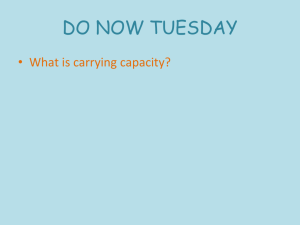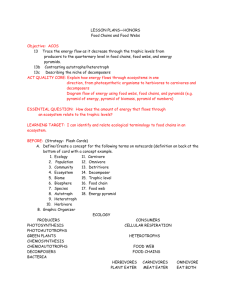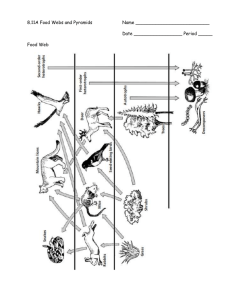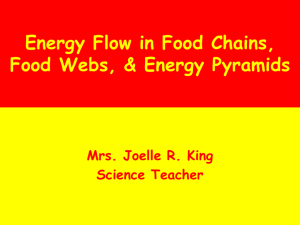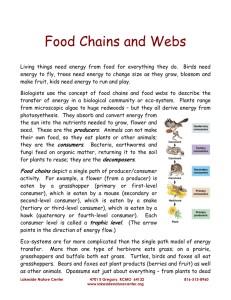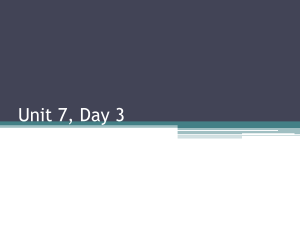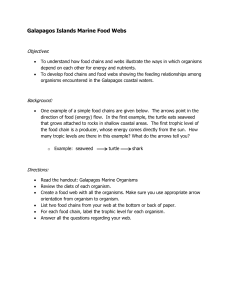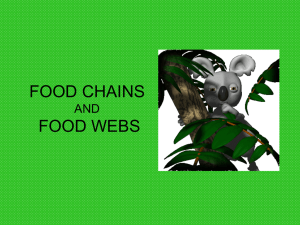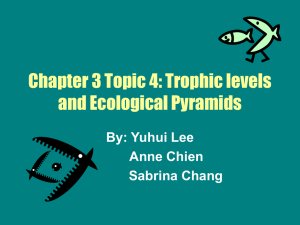Food chains - cashmerebiology
advertisement
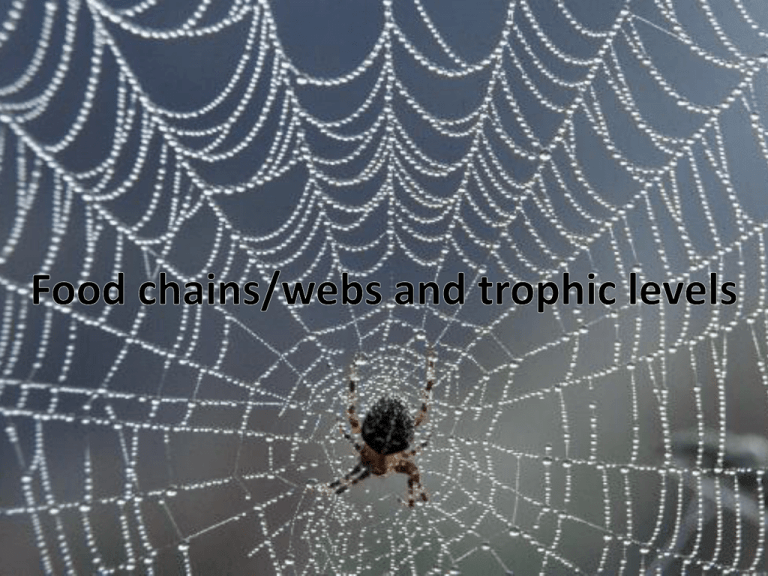
Trophic levels • Determines the pathways of energy flow and nutrient cycling (more on this later) • Different species in the ecosystem are divided into different trophic levels depending on what they eat • There are 5 main levels Trophic levels Level 1 – Producers • The bases of food chains • Get their energy from the sun • E.g. Plants Level 2 – Primary Consumers • Herbivores • Eat a range of plant material Trophic level Level 3 – Secondary Consumers • Organisms that eat Primary consumers (Herbivores) Level 4 – Tertiary Consumers • Eat Secondary consumers Level 5 – Quaternary Consumers • Eat Tertiary consumers Food chains • Sequence of organisms, each of which is a source of food for the next. • Always begins with a producer Plant Caterpillar Bird Cat • Animals with the same number of links to other organisms are on the same trophic level Food chains/food webs • In real life a particular herbivore may eat more than one type of plant or a carnivore may eat lots of different herbivores • Hence a more accurate way of showing trophic levels is by using a food web Cat Lizard Snail Bird Worm Plants Caterpiller Pyramids • Another way of representing a food chain 1. Pyramid of numbers 2. Pyramid of biomass 1. Pyramid of numbers • Number of each type of organism at each trophic level • Not always accurate as does not take the size of organism at each level into account – E.g. One large tree could support thousands of caterpillars. Pyramid of numbers 10 Cats 500 Birds 30,000 Caterpillars 1,000 Flax bushes 2. Pyramid of Biomass • More accurate method • The weight of living matter at each level is measured • Most accurate to use the DRY matter weight Pyramid of Biomass 500 kg Humans 1 ton trout 300 tons shrimp 1,000 tons of seaweed Ways in which food chains and webs can be affected. 1. Removing one part of the food chain 2. Biological magnification 3. Introducing an exotic species 4. Removal of too much of an organism Ways in which food chains and webs can be affected. • Removing one part of the food chain – Happens through over farming, fishing and cutting down of native forest. – If you remove too much of the producer, then the rest of the food chain suffers Ways in which food chains and webs can be affected. • Biological magnification – Concentrations of poison (e.g. mercury, DDT) increase as it moves up the food chain or up the pyramid – Top predator gets the highest concentrations Ways in which food chains and webs can be affected. • Introducing an exotic species – Rabbits – Possums – Deer Ways in which food chains and webs can be affected. • Removal of too much of an organism – Can make an ecosystem unsustainable – E.g. Over fishing – not enough older fish for reproduction – E.g. Over farming – Nutrients are not returned to the soil therefore it becomes useless

